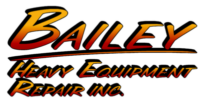Our Best Practices for Line Boring
Find yourself wondering what might be some good ways to do line boring? Line boring is an essential process in engine machining, ensuring parts align exactly as they should. Unfortunately, it’s a complex process requiring plenty of precision and effort to prevent work hardening and to ensure machined parts align correctly. Read on to get to know the best tips to follow when line boring.
Pay attention to the color of the chips
When you’re using high-speed steel (HSS) tooling for line boring, look closely at the color of the chips. You can easily tell if your HSS is overheating if you notice blue chips. Overheating causes the machine to lose its hardness, resulting in severely reduced machining performance. If you’re using carbide tooling without coolant, look for light blue chips to indicate overheating. As soon as you notice overheating, reduce the speed of the machine to lower the heat and prevent work hardening.
Choose your tools wisely
One of the best tips to use when line boring is to select the right tool for the task at hand. HSS tooling is slower than carbide, but it’s inexpensive, easy to sharpen and won’t fracture in the same way as carbide.
Generally, though, the performance of carbide tooling is better for machining welded material. It can withstand high-density grain boundaries in a way that HSS can’t, but it is more sensitive to fracturing. Always sharpen the tool bits with a silicon carbide wheel and use a small fine stone to hone the edge of the carbide bit.
Double-check your measurements
There are many effective ways to measure the bore, but it’s always best to double-check your work with a secondary method. Use over-the-bar calipers to quickly and accurately measure the bore while the bar’s still in place. Special bore measuring tools can also pinpoint the distance from the bore surface to the bar, helping you quickly and accurately gauge bore diameters.
Many bore measuring tools can also serve as a tool setting device, allowing you to correctly index the tool. You can always use spring calipers and micrometers for indexing—they’re old school but provide a tried-and-true way to easily gauge the diameter of the bore.
Use a standard 1-inch throw dial indicator with a mushroom head and magnetic base for tool setting—they make it easy for you to adjust the tool height as you work. Use inside micrometers and T-gauges to provide absolute accuracy for bore measuring, but keep in mind the bar will have to be removed to accommodate these measuring tools.
Each machinist has their own preferred methods when it comes to line boring. Whether you’re just starting out or you have years of experience in the industry, learning about some good ways to do line boring can go a long way in making your efforts easier and your work more precise. For more information on line boring and the equipment required to do the job right, reach out to the team at Bailey Heavy Equipment Repair, Inc. today.
